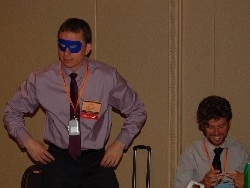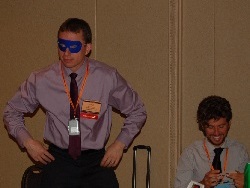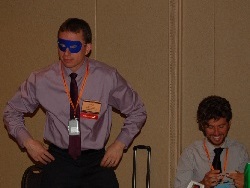


Asked: I am in the process of creating Professional Development for a group of cafeteria workers. I would like some good openers and closers. Can you share?
Answered:
As I think about your question, I am struck by a conversation I had with a client several weeks ago. He was asking essentially that same question and wanted to know the best opener to use with his group. The difficulty with answering this is that it truly depends on the topic and focus of your training. Before I give a few suggestions that work with most content with only minor tinkering, here are three keys that any good opener should have.
1)It should break preoccupation – participants are thinking about so many things, our opener should get them ready to learn immediately.
2)It should allow for networking – participants feel more at ease when they have a chance to network with peers. This helps reduce tension which helps increase retention.
3)It should be content relevant – this is the difference between an opener and an ice breaker. Openers should always be content relevant.
The third point is where we find the sticking point in answering your question. Depending on your content, the opener will vary. That being said, here are a few options that can be adapted easily that will meet the three criteria above:
* Use a statistic: Find an interesting statistic relating to the content you are about to cover. Simply give them the number and ask them to talk at their tables and come up with what they think it is related to. (Bonus Tip: In an effort to really encourage engagement and ownership, I like to use handheld dry-erase boards that they write their answers on and hold up for the room to see. It is a fun tool with a lot of applications and is a green alternative to paper.)
* Ask a discussion question: Avoiding questions that have a definite right and wrong answer, ask a question that participants can discuss at their tables and then share back opinions and thoughts. This question will be a primer for what is about to come.
* Make a word find: Take all of the words and concepts that you will be working with and make a word find out of them. Give participants time with their tables or with partners to find as many words as they can and then have them identify two items they already know a lot about and two that they would like to know more about. This gets them ready for the content about to come. A great free resource for making word finds is at www.puzzlemaker.com.
I used to think that I needed to make up every activity on my own, but I have since realized that people have already thought of these same ideas and are willing to share them online or in books. Listed below are several other resources with hundreds of other opening and closing activities.
Book suggestions:
Super Closers, Openers, Reviews and Energizers, books 1 and 2
On our site, we also have archives from these ezines. You can find a lot of openers and closers here, too.
There are three keys to a closer that you may wish to keep in mind as you do your research. A good closer:
1)Allows for action planning – Let participants identify what information is most valuable and useful.
2)Allows for celebration – Learning should be fun and finding new information that makes us better at our jobs can be a celebration.
3)Ties things together – This is not the instructor tying things together for the learner but rather the learning tying things together for him or herself.
If the activity you propose does these things, then you have a good closer. The key to remember is that we want our learners to act differently when they leave the room, and a good closer helps identify those next steps.
Scott Enebo is a training consultant for The Bob Pike Group. If you have a question you would like answered, send us an email at EzineEditor@BobPikeGroup.com.
Don't miss out on updates and chances
to sharpen your skills with participant-centered learning.




3740 N Chestnut St #113 - Chaska, MN 55318-3053